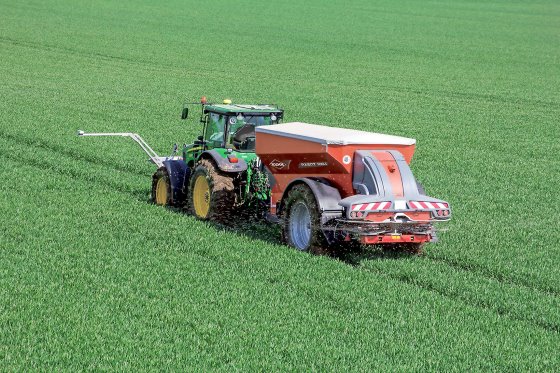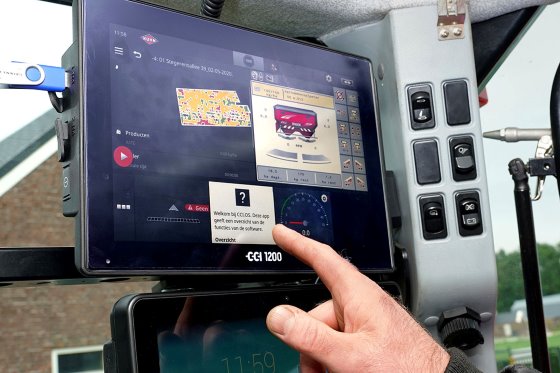In the quest for affordable equipment capable of precision fertiliser application, opportunities for smaller or medium-sized growers exist in both new and retrofit designs.
Approaches might vary, and some may cost more than others, but the popularity of precision fertiliser application appears to be gaining for those who may not have hundreds of thousands to spend.
The use of older broadcast models, however, still persists with a significant portion of growers – and not without reason.
Retrofit options
In Ontario and Eastern Canada, some growers with hydraulically-driven pull-behind spreaders opt to retrofit their machines with aftermarket rate control modules. The same can be done with air cart units. The larger investments required to upgrade older power-take off (PTO) , ground-driven models (e.g. three-point hitch Wilmar style spreaders) is more significant – enough so that purchasing a new fertiliser applicator might make more economic sense.
The granular fertiliser boxes featured on corn planters can also be retrofitted in a similar fashion, if driven by hydraulics rather than ground speed. But due to the comparatively small amount of nutrient being applied at seeding, variable rate investments in bulk spreaders bring better returns.

Liquid applicators
Liquid applicators are another area where growers can easily make variable rate upgrades, assuming their sprayers are in fact compatible with variable rate to begin with. The use of Y-drop systems – whether purchased or of homemade design – is another strategy gaining attention amoung growers who use sprayers for both crop protection and nutrient applications.
Even homemade Y-drop systems can be expensive, however. Growers making investments in the application strategy generally do so in order to match other elements of their production style, and growing conditions. Indeed, Y-drop application is particularly popular for those growing corn in sandier soils, and hopefully, geographies where rain can be counted on.
Barriers in applying digital interface
Companies offering fertiliser application retrofit kits include, but are certainly not limited to, John Deere, Precision Planting, and Ag Express, with options running the gamut from very simple to highly complex.
Fundamentally, the fertility prescription drives everything. Applying this on a scale that actually makes a difference can be a challenge for smaller producers, though it is possible.
Older style spinner spreaders, for example, can be augmented with an electric drive to open or close the fertiliser gate as it travels down the field. Limitations on how small the swath can be, however, is a barrier, and those employing such technology cannot expect to achieve the same level of prescription accuracy as those with section control.
Indeed, sectional control systems make prescription map application much less of an obstacle for those upgrading liquid application systems.

Buying new, if the math works out
Self-propelled sprayers, while favoured by many for both crop protection and fertiliser application, are often way beyond the price range of smaller – and even mid-size – growers. This reality continues to generate interest in comparatively affordable pull-behind or rear-attached applicators.
One grower interviewed for this article, for example, made use of an Amazone ZA-TS hydraulically-driven dry fertiliser spreader with left and right sectional control. While the piece in question was on the larger end of the models offered by the company, it effectively incorporated any field mapping system (e.g. Raven, Case-IH, etc.) and delivered “nearly perfect” sectional control.
The grower has since moved on to other application equipment, though reiterated the usefulness of the design.
Similar equipment models are available from other companies, such as Denmark-based Brendal. Other brands like Chandler also offer many of the aforementioned advantages through a combination of PTO and hydraulic drives, and ISO compatibility.
These examples and many others are a step-up from PTO and chain driven spreaders. But the technology comes at a price – approximately $ 40,000 to $ 50,000 USD in the Chandler case, for example.
Rent older style fertiliser wagons
Such costs might pale in comparison to the price of a new self-propelled liquid applicator, but they are still substantial for smaller growers. It’s one of the reasons why so many producers in the region still opt to rent older style fertiliser wagons from their local co-operative – and why adoption of more advanced fertiliser technology might appear lacking compared to other parts of the world, including Europe.


